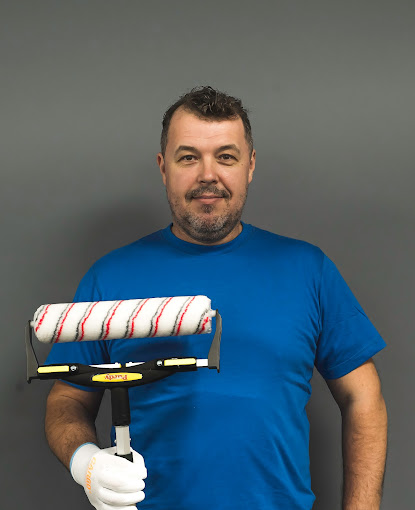Table of Contents
It´s very important from time to time to give our home a different look and recharge it with new colours that make it look like a renewed and pleasant environment. The ceiling is one of the elements that should not go unnoticed since it´s the centre of attention of the eyes and although it may not seem like it, it stands out enormously concerning the walls. So how do you apply paint to interior ceilings?
We invite you to know some basic recommendations that you must follow to achieve a textured ceiling finish and that your guests will be delighted with the painting of your home and its finish.
What are the materials needed to apply paint to interior ceilings?
If you have already decided to tint the ceiling of your house to improve its appearance, the first thing you should do is look for the materials you need to be able to carry out the work without any impediment. Among the tools and materials that you should buy are:
- Ceiling Color
- Brush
- Paint roller
- Roller cover
- Trays
- Painters tape
- Chute or bucket
- A ladder that is safe and high enough to reach the most difficult points
- Newspaper, drop cloth, or mop dampened with enough water to remove interior wall paint that may splatter on the floor
The tone selection is very important since it generates a huge visual impact on the environment and the lighting of the house or room. Make sure to select a good quality emulsion to ensure optimal coverage and avoid having to work too hard applying multiple coats to completely cover the entire surface for a flat finish.
Steps to apply paint to interior ceilings
If you want to paint the interior ceiling of your house to get warmth and improve the amplitude of a specific space, it´s convenient to be clear that this activity is not an easy task. However, we give you some basic tips that you should follow so that the roof of your house looks perfect after finishing.
1. Preparation
The first thing you should do is prepare the area where you are going to work. It´s convenient to remove all the decorative objects from the place to avoid being splashed with emulsion. Furniture, pictures, tables, or any other valuable element that is in the area should be removed or covered with a sheet. Curtains and lamps must be completely removed and placed once the painted ceiling on your living room is dry.
Wall outlets should be covered with painters tape as there is a possibility that they can be splashed. The person in charge of applying the emulsion must wear appropriate clothing that includes safety glasses, a cap, or a hat. The ideal clothing needs to be waterproof or wear worn clothing so that it´s not a problem if it gets stained.
The entire floor should be covered in disposable newspaper or plastic wrap as the chances of splashing onto the floor are high. If a protective material is not placed, it´s mandatory to use a drop cloth every time a splash falls on the floor. Otherwise, it will be more difficult to remove the stain.
2. Repair of battered areas
If the entire ceiling of our house has cracks, these must be covered correctly before applying tint. Repair the cracks with putty and sand the entire surface. Then clean it with a damp towel and remove all excess material. Once the surface has been sanded and cleaned, it´s necessary to apply a layer of acrylic sealant to prevent any difference in absorption that the repair may have.
3. Paint application around the perimeter
It´s convenient to dye the entire perimeter in the square foot using a brush or roller; that is, the edges, corners, or angles that are between the ceiling and the surrounding walls. In this way, it will be easier and faster to dye the rest of the ceiling with the use of a roller.
4. First coat of paint
Put sufficient pigment on the tray and drip the roller completely. Then strain it and begin applying light shades to the surface gently. Make a vertical strip and do not go over it in the opposite direction. The roller should slide easily, it´s not necessary or advisable to put enough pressure to ensure a flat sheen or popcorn ceiling.
5. Second coat of paint

After applying the first coat, you must wait for it to dry completely before applying another coat to cover the entire ceiling. The second coat of gloss must be applied using the same technique as the first coat, but only going horizontally. It´s recommended that once the second coat dries, pass the dry roller in the same direction as in the first coat; that is, vertical. With this technique, a professional and wonderful paint finish can be obtained.
Rollers minimize the possibility of overflow marks on each coat of emulsion. If there are hard-to-reach spaces where the roller or brush cannot be easily used, the use of a paintbrush may be appropriate.
It´s important to clean the tools once the paint application process is finished, in this way they will be kept in good condition for the next opportunity.
To start with the renovation
Decorating and painting the house is an exciting activity that many people love to do, it´s a tradition that has been maintained for a long time to transform the environment and create new spaces just by applying a tone. But painting your home is not just about the walls, applying paint to interior ceilings is a basic aspect that you should always keep in mind, so don’t forget

Robert Martinak is a Painting Technology Specialist with over 30 years of experience in the field. He is based in Dublin, Ireland and has extensive knowledge and expertise in the application and management of painting projects.

















